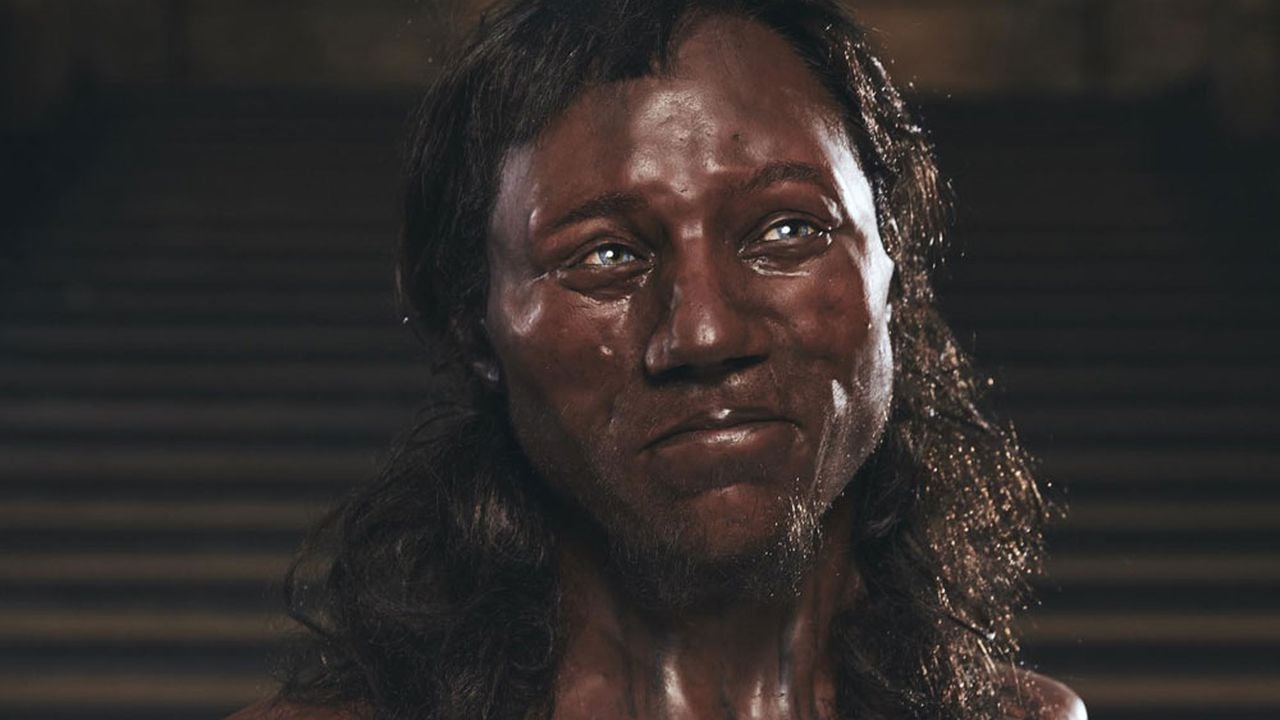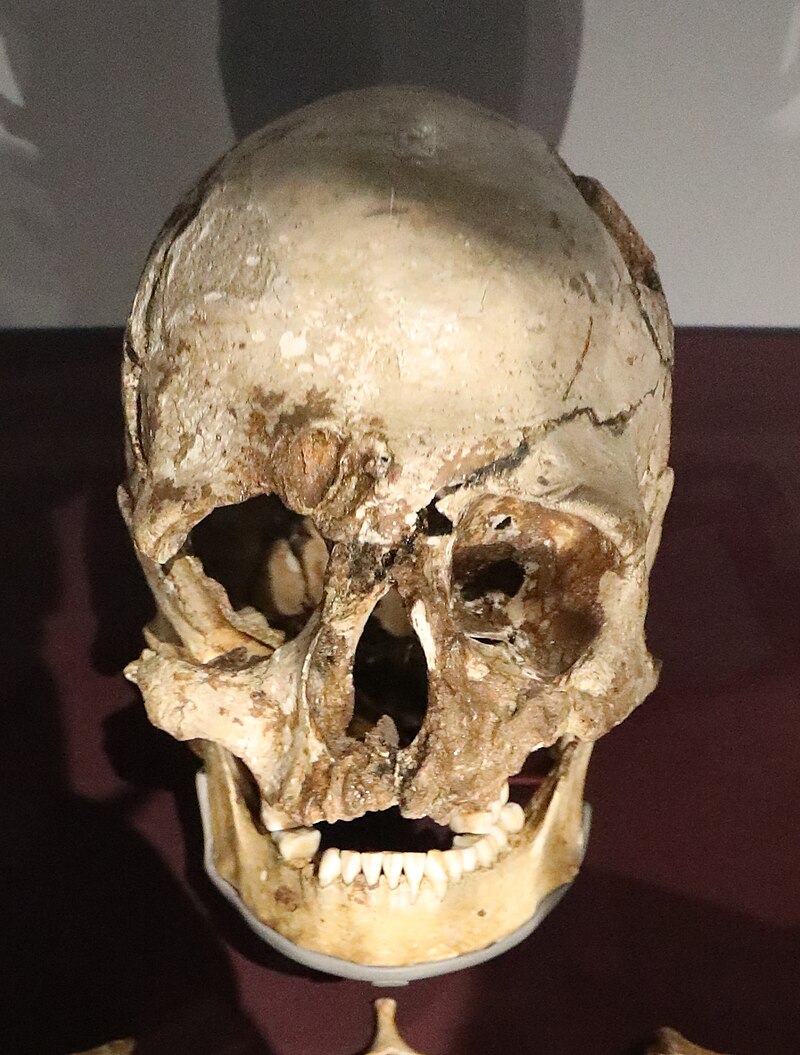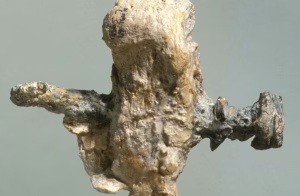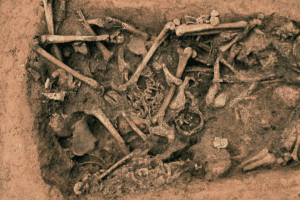
Britain’s Blue-Eyed Ghost
When scientists unveiled the face in 2018, the room went quiet. Dark skin. Bright blue eyes.
It was a combination that startled researchers, not because it cannot occur today, but because of this particular ancient genetic signature. A dark-skinned hunter-gatherer gene paired with the early European light-eye mutation has long since been diluted by millennia of population mixing.
He seems out of place, not because such features cannot exist, but because we’ve been conditioned to expect ancient Britons to look like modern Britons.
The Bones in the Dark
He was found in 1903, deep inside Gough’s Cave in Somerset’s Cheddar Gorge.
The same cave system where, five thousand years earlier, other humans had crafted skulls into ceremonial cups is now a site of archaeological interest.
But Cheddar Man came later, from a different world.
He died around 10,000 years ago (approximately 8,000 BCE) during the Mesolithic period, after the great ice sheets had retreated and Britain was becoming an island.
His skeleton lay in the cave’s Cheddar Man Chamber, remarkably complete, curled in the darkness for ten millennia.
How he died remains uncertain. There are no apparent signs of violence, no clear cause of death. He was in his twenties, well-nourished, healthy.
He ended up in that cave and never left.
The Face No One Expected
For over a century, everyone assumed he looked like a modern northern European. Pale skin, perhaps light hair. The reconstructions showed a man who could have walked through Bristol without a second glance.
Then came the DNA analysis in 2018, and everything changed.
Cheddar Man had dark to black skin, the same shade as modern sub-Saharan Africans.
His eyes were blue or blue-green, brilliant and cold. Dark curly hair framed his face. It was a combination that startled researchers and the public alike, because that particular mix of genes doesn’t occur in modern populations.
The genes for light eyes evolved in European hunter-gatherers long before the genes for light skin. For thousands of years, people like Cheddar Man moved across the continent with this striking appearance – dark skin catching firelight, pale eyes watching the herds.

The Ghost Population
Cheddar Man represents a people who no longer exist in their original form. His hunter-gatherer population roamed Britain for millennia after the Ice Age, living off deer, fish, and wild plants. They were sophisticated, artistic, and successful.
Then, around 6,000 years ago, farming populations from the Middle East and Anatolia arrived. They brought agriculture, new technologies, and different genes – including those for lighter skin. The populations mixed and merged, and eventually, the old hunter-gatherer appearance vanished, broken up by thousands of years of genetic blending.
Remarkably, Cheddar Man’s DNA lives on. A history teacher in the modern village of Cheddar shares genetic markers with him, a thread of ancestry stretching across 300 generations. The face changed, but the blood remembers.

The Beautiful Stranger
What makes Cheddar Man unsettling isn’t violence or ritual. Recognition and alienation are happening simultaneously. He is British – more anciently British than almost anyone – yet he would be unrecognisable as such.
Those blue eyes would meet yours with complete comprehension. He would understand grief, humour, love, and fear. But his reflection is a reminder that “us” is constantly changing, that the familiar is just a brief arrangement of genes, temporary as morning frost.
He lies in the Natural History Museum now, Britain’s beautiful ghost, dark-skinned and blue-eyed, belonging to everyone and no one.
The Modern Descendant of Cheddar Man
In the late 1990s, researchers at Oxford University carried out DNA testing on Cheddar Man’s molar tooth. They compared it with DNA from local volunteers living in the Cheddar area of Somerset.
To everyone’s amazement, they found a direct maternal-line match with a local schoolteacher named Adrian Targett.
- The DNA compared was mitochondrial DNA, which is passed from mother to child unchanged, except for rare mutations.
- This means that Adrian Targett and Cheddar Man share a common maternal ancestor who lived roughly 10,000 years ago — an unbroken line of descent through local generations.
- And incredibly, Targett still lived less than a mile from the cave where his ancestors’ remains were found.
Some argue that the DNA evidence is flawed. However, DNA experts will often state that it is ‘highly probable’ that his skin was darker rather than it being definitively correct. This is the approach taken by the Natural History Museum in London.







